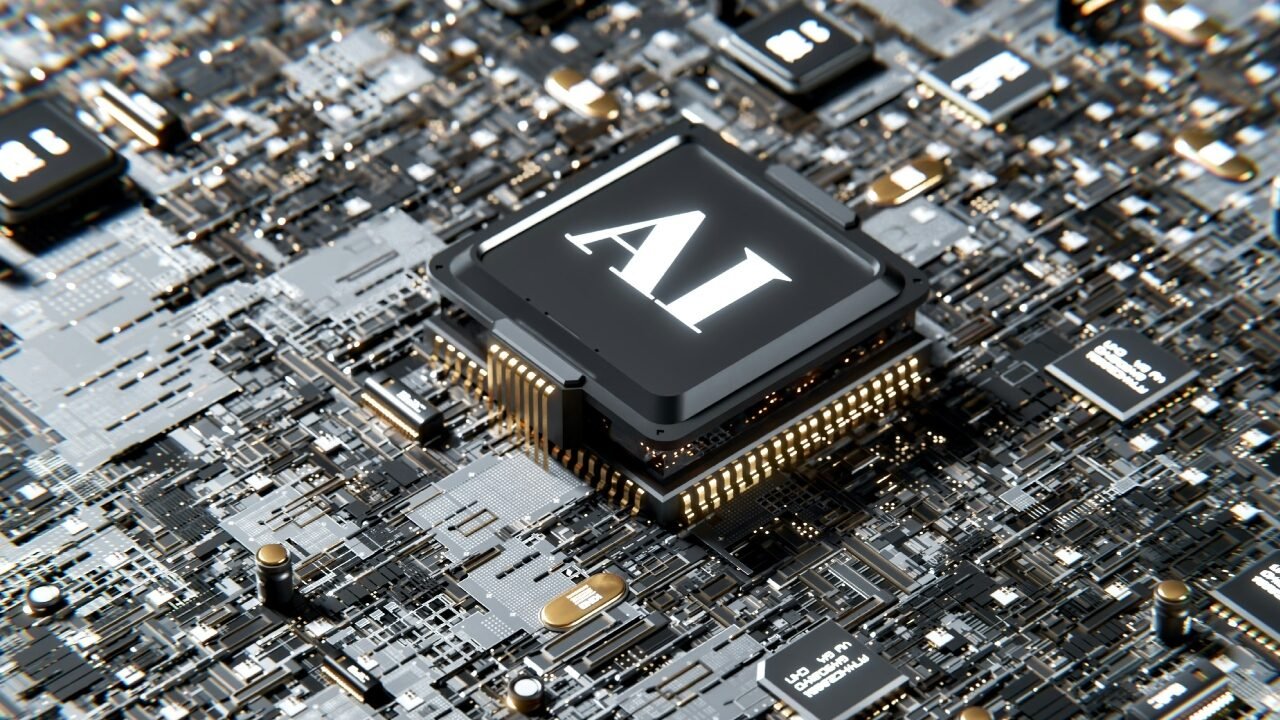AI Insights
Using Generative AI in the Battle Against Invasive Plants – News

A single plant costs U.S. ranchers $35 million a year(opens in new window). Now, a team of researchers is using artificial intelligence to keep it in check.
Researchers at Carnegie Mellon University, together with scientists at a conservation ranch in Montana, developed a method that trains machine learning models to detect invasive species more effectively, even with limited data.
One invasive, leafy spurge is a noxious weed with small green flowers that can wreak havoc on farms and natural ecosystems. Toxic to livestock, it can render whole hayfields inedible by crowding out native plants. Researchers estimate that it causes more than $35 million in losses annually in the country’s beef and hay production.
But the costs go far beyond the bottom line. As grazing lands shrink, food supplies tighten. As invasive species spread, pesticide use rises. Native plants disappear, pollinators and birds lose habitat, and the broader ecosystem begins to unravel. What starts as a weed in a pasture can quickly become a threat to the land itself.
Tracking down, monitoring and ultimately eradicating invasive species is a priority for those in agriculture, conservation and ecology, but this task is time-consuming and costly. AI could help, but scientists lack the data needed to develop a tool that can effectively identify and monitor these plants.
“These invasive plants are a serious problem,” said Ruslan Salakhutdinov(opens in new window), faculty in CMU’s School of Computer Science(opens in new window). “Leafy spurge can destroy the ecosystems around it. Building a machine learning tool to help was a tough problem to solve because we didn’t have massive amounts of data on this plant, even online. So, it became this problem of how do we build accurate models with a limited amount of data. That’s the problem we wanted to solve. And, along with this interesting problem, the solution has a big impact on the ecology and environment.”
Salakhutdinov is the UPMC Professor of Computer Science in the Machine Learning Department (MLD). He worked with Brandon Trabucco, an MLD doctoral student; Max Gurinas, at Harvard University; and Kyle Doherty, a staff scientist at MPG Ranch(opens in new window), which manages more than 15,000 acres of conservation property in Western Montana for research. Scientists at MPG Ranch had been using drones and AI tools to map locations of plants in greater detail. Even though Doherty called himself an “AI nerd,” working with Salakhutdinov’s lab expanded his knowledge of the field.
Researchers in SCS wanted to leverage new generative AI tools to improve existing models trained to detect leafy spurge using existing drone images. Salakhutdinov and Trabucco wondered if using synthetic images of leafy spurge made with AI could create the needed data to make the models work better.
Researchers developed a new technique called DA-Fusion(opens in new window), which uses advanced AI models to create more useful training images. Normally, to expand a dataset, researchers make small changes to existing images, like cropping or flipping them. DA-Fusion goes further by changing the image’s subject or background. For example, if the original photo shows leafy spurge growing in a crop field, DA-Fusion might generate an image of the same weed in a forest or a grassy field during a different season.
DA-Fusion created diverse training data of leafy spurge under various weather conditions, such as snow or during a spring bloom. This spared ecologists in Montana from needing to go out in every weather condition to gather data.
“The costs to effectively manage a conservation ranch like MPG can be quite high, and a lot of that is due to the labor necessary to access remote areas and assess the presence of plants like leafy spurge,” said Gurinas. “Machine learning techniques like the one we’ve developed allow a degree of automation which makes conservation efforts across wider areas more economically feasible.”
By improving the diversity and quality of training data, researchers can improve the accuracy of machine learning models with fewer examples. Researchers agree that establishing this relationship between conservation scientists and machine learning researchers is a critical development for the future of agriculture and ecology.
“The exciting thing about the datasets that we’re building is that they’re unique. There aren’t many ecological datasets out there for the machine learning community to sink their teeth into,” Doherty said. “I think people are interested in making an impact. You can solve the problem of restoration ecologists and combat climate change. It’s meaningful work that’s important to put out there.”
Doherty and his colleagues at MPG Ranch have made their leafy spurge dataset publicly available(opens in new window) for the machine learning community. By sharing the data openly, they hope to accelerate efforts to detect and manage other invasive species.
“These tasks are some of the most important we face as a society,” Trabucco said. “Problems like leafy spurge are very underserved, and maybe the advances that we see in machine learning can help us in the ways we’ve seen these tools solve other problems and unlock new abilities.”
AI Insights
OpenAI and Meta say they’re fixing AI chatbots to better respond to teens in distress

SAN FRANCISCO — Artificial intelligence chatbot makers OpenAI and Meta say they are adjusting how their chatbots respond to teenagers and other users asking questions about suicide or showing signs of mental and emotional distress.
OpenAI, maker of ChatGPT, said Tuesday it is preparing to roll out new controls enabling parents to link their accounts to their teen’s account.
Parents can choose which features to disable and “receive notifications when the system detects their teen is in a moment of acute distress,” according to a company blog post that says the changes will go into effect this fall.
Regardless of a user’s age, the company says its chatbots will redirect the most distressing conversations to more capable AI models that can provide a better response.
EDITOR’S NOTE — This story includes discussion of suicide. If you or someone you know needs help, the national suicide and crisis lifeline in the U.S. is available by calling or texting 988.
The announcement comes a week after the parents of 16-year-old Adam Raine sued OpenAI and its CEO Sam Altman, alleging that ChatGPT coached the California boy in planning and taking his own life earlier this year.
Meta, the parent company of Instagram, Facebook and WhatsApp, also said it is now blocking its chatbots from talking with teens about self-harm, suicide, disordered eating and inappropriate romantic conversations, and instead directs them to expert resources. Meta already offers parental controls on teen accounts.
A study published last week in the medical journal Psychiatric Services found inconsistencies in how three popular artificial intelligence chatbots responded to queries about suicide.
The study by researchers at the RAND Corporation found a need for “further refinement” in ChatGPT, Google’s Gemini and Anthropic’s Claude. The researchers did not study Meta’s chatbots.
The study’s lead author, Ryan McBain, said Tuesday that “it’s encouraging to see OpenAI and Meta introducing features like parental controls and routing sensitive conversations to more capable models, but these are incremental steps.”
“Without independent safety benchmarks, clinical testing, and enforceable standards, we’re still relying on companies to self-regulate in a space where the risks for teenagers are uniquely high,” said McBain, a senior policy researcher at RAND.
AI Insights
Dolby Vision 2 bets on artificial intelligence

Dolby Vision 2 will use AI to fine-tune TV picture quality in real time, taking both the content and the viewing environment into account.
The “Content Intelligence” system blends scene analysis, environmental sensing, and machine learning to adjust the image on the fly. Features like “Precision Black” enhance dark scenes, while “Light Sense” adapts the picture to the room’s lighting.
Hisense will be the first to feature this AI-driven technology in its RGB Mini LED TVs. The MediaTek Pentonic 800 is the first processor with Dolby Vision 2 AI built in.
AI Insights
How an Artificial Intelligence (AI) Software Development Company Turns Bold Ideas into Measurable Impact

Artificial intelligence is no longer confined to research labs or Silicon Valley boardrooms. It’s quietly running in the background when your bank flags a suspicious transaction, when your streaming service recommends the perfect Friday-night movie, or when a warehouse robot picks and packs your order faster than a human could.
For businesses, the challenge is not whether to adopt AI. It’s how to do it well. Turning raw data and algorithms into profitable, efficient, and scalable solutions requires more than curiosity. It calls for a dedicated artificial intelligence (AI) software development company — a partner that blends technical mastery, industry insight, and creative problem-solving into a clear path from concept to reality.
Why Businesses Lean on AI Development Experts
The AI landscape is moving at breakneck speed. A new framework, algorithm, or hardware optimization can make yesterday’s cutting-edge solution feel outdated overnight. Keeping up internally often means diverting resources from your core business. And that’s where specialists step in.
- Navigating complexity: Modern artificial intelligence systems aren’t plug-and-play. They involve layers of machine learning models, vast datasets, and intricate integrations. A seasoned partner knows the pitfalls and how to avoid them.
- Bespoke over “one-size-fits-all”: Off-the-shelf AI products can feel like wearing a suit that almost fits. Custom-built solutions mould perfectly to a business’s data, workflows, and goals.
- Accelerating results: Time is money. An experienced AI team brings established workflows, pre-built tools, and domain expertise to slash development time and hit the market faster.
The right development company doesn’t just deliver code; it delivers confidence, clarity, and a competitive edge.
What an AI Software Development Company Really Does
Imagine a workshop where engineers, data scientists, and business analysts work side-by-side, not just building tools but engineering transformation. That’s the reality inside a high-performing AI development company.
Custom AI solutions
Predictive analytics solutions that spot market trends before they peak, computer vision systems that inspect thousands of products per hour, or natural language processing (NLP) engines that handle customer queries with human-like understanding, the work is always tailored to the problem at hand.
System integration
Artificial intelligence is most powerful when it blends seamlessly into the systems you already rely on (from ERP platforms to IoT networks), creating a fluid, interconnected digital ecosystem.
Data engineering
AI feeds on data, but only clean, structured, and relevant data delivers results. Development teams collect, filter, and organize information into a form that algorithms can actually learn from.
Continuous optimization
AI isn’t a “set it and forget it” investment. Models drift, business needs evolve, and market conditions change. Continuous monitoring and retraining ensure the system stays sharp.
The Services That Power AI Transformation
A top-tier AI development partner wears many hats — consultant, architect, integrator, and caretaker — ensuring every stage of the AI journey is covered.
AI consulting
Before writing a single line of code, consultants assess your readiness, map potential use cases, and create a strategic roadmap to minimize risk and maximize ROI.
Model development
From supervised learning models that predict customer churn to reinforcement learning algorithms that teach autonomous systems to make decisions, this is where the real magic happens.
LLM deployment
Implementing large language models fine-tuned for industry-specific needs, e.g., for automated report generation, advanced customer service chatbots, or multilingual content creation. LLM deployment is as much about optimization and cost control as it is about raw capability.
AI agents development
Building autonomous, task-driven agents that can plan, decide, and act with minimal human input. From scheduling complex workflows to managing dynamic, real-time data feeds, digital agents are the bridge between intelligence and action.
AI integration
The best artificial intelligence isn’t a separate tool; it’s woven into your existing platforms. Imagine your CRM not just storing customer data but predicting which leads are most likely to convert.
Maintenance and support
AI models are like high-performance cars; they need regular tuning. Post-launch support ensures they continue to perform at peak efficiency.
The AI Implementation Process
Every successful AI project follows a deliberate and well-structured path. Following a proven AI implementation process, you can keep projects focused, transparent, and measurable.
- Discovery and goal setting: Clarify the “why” before tackling the “how.” What problem are we solving? How will success be measured?
- Data preparation: Gather datasets, clean them of inconsistencies, and label them so the AI understands the patterns it’s being trained on.
- Model selection and training: Choose algorithms suited to the challenge — whether that’s a neural network for image recognition or a gradient boosting model for risk scoring.
- Testing and validation: Rigorously test against real-world conditions to ensure accuracy, scalability, and fairness.
- Deployment and integration: Roll out AI into the live environment, integrating it with existing workflows and tools.
- Monitoring and continuous improvement: Keep a pulse on performance, retraining when needed, and adapting to evolving business goals.
Industries Seeing the Biggest Wins from AI
While every sector can find value in AI, some industries are already reaping transformative benefits.
- Healthcare: AI is helping radiologists detect anomalies in scans, predicting patient risks, and even accelerating the search for new treatments.
- Finance: Beyond fraud detection, AI models are powering real-time risk analysis and automating compliance, saving both time and reputation.
- Retail and eCommerce: Personalized product recommendations, demand forecasting, and dynamic pricing are reshaping the customer experience.
- Manufacturing: AI-driven predictive maintenance prevents costly downtime, while computer vision ensures every product meets quality standards.
- Logistics: From route optimization to real-time fleet tracking, AI keeps goods moving efficiently.
Choosing the Right AI Development Partner
Not all AI partners are created equal. The best ones act as an extension of your team, translating business goals into technical blueprints and technical solutions into business outcomes. Look for:
- Proven technical mastery — experience in your industry and with the AI technologies you need.
- Room to grow — scalable solutions that expand with your data and ambitions.
- Security at the core — a partner who treats data protection and compliance as non-negotiable.
- Clear communication — transparent reporting, realistic timelines, and a commitment to keeping you informed at every stage.
Artificial intelligence has become the driving force behind modern business competitiveness, but it doesn’t run on autopilot. Behind every successful deployment is a team that knows how to design, train, and fine-tune systems to meet the realities of a specific industry.
A reliable artificial intelligence software development company is more than a vendor; it’s a long-term partner. It shapes AI into a tool that fits seamlessly into daily operations, strengthens a company’s existing capabilities, and evolves in step with changing demands.
In the end, AI’s true potential comes from the interplay between human expertise and machine intelligence. The companies that invest in that partnership now won’t merely adapt to the future. They’ll set its direction.
-

 Business4 days ago
Business4 days agoThe Guardian view on Trump and the Fed: independence is no substitute for accountability | Editorial
-
Tools & Platforms3 weeks ago
Building Trust in Military AI Starts with Opening the Black Box – War on the Rocks
-

 Ethics & Policy1 month ago
Ethics & Policy1 month agoSDAIA Supports Saudi Arabia’s Leadership in Shaping Global AI Ethics, Policy, and Research – وكالة الأنباء السعودية
-

 Events & Conferences3 months ago
Events & Conferences3 months agoJourney to 1000 models: Scaling Instagram’s recommendation system
-

 Jobs & Careers2 months ago
Jobs & Careers2 months agoMumbai-based Perplexity Alternative Has 60k+ Users Without Funding
-

 Education2 months ago
Education2 months agoVEX Robotics launches AI-powered classroom robotics system
-

 Funding & Business2 months ago
Funding & Business2 months agoKayak and Expedia race to build AI travel agents that turn social posts into itineraries
-

 Podcasts & Talks2 months ago
Podcasts & Talks2 months agoHappy 4th of July! 🎆 Made with Veo 3 in Gemini
-

 Education2 months ago
Education2 months agoAERDF highlights the latest PreK-12 discoveries and inventions
-

 Education2 months ago
Education2 months agoMacron says UK and France have duty to tackle illegal migration ‘with humanity, solidarity and firmness’ – UK politics live | Politics


